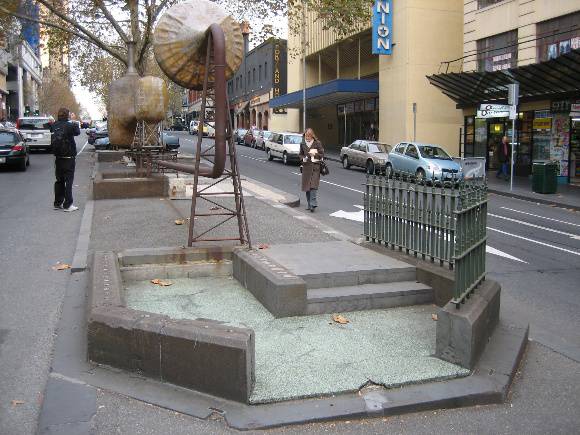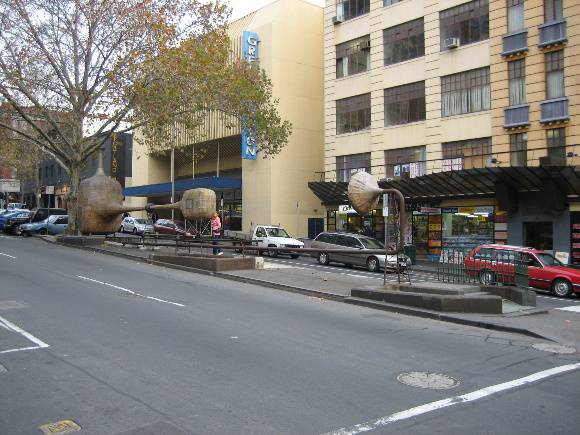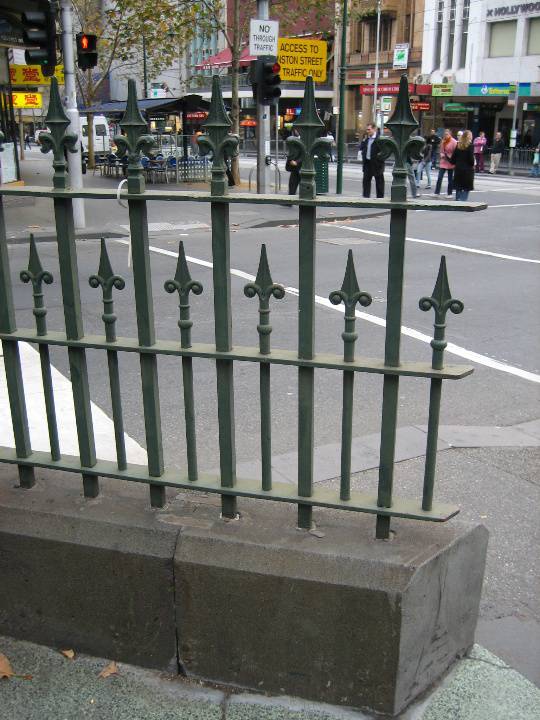| Back to search results » | Back to search page » |
|
UNDERGROUND PUBLIC TOILETS
LocationRUSSELL STREET MELBOURNE, MELBOURNE CITY
File NumberPL-HE/03/0980LevelRegistered |
|
Statement of Significance
What is significant? The underground public toilet in Russell Street was built in 1902 and designed by the Melbourne City Surveyor Adrien C Mountain. It included facilities for men and women, and was both the first underground public toilet built in Melbourne, and the first public toilet for women. It was one of a number of underground public toilets built in Melbourne in the early twentieth century in response to increasing demand for public toilet facilities in the city that were both sanitary and discreet. Until then there were no public toilets for women, and very few for men. The first public toilet, a urinal for men only, had been built in 1859, following the opening of the Yan Yean water supply in 1858. But such street level toilets were regarded as indecently public, and without an underground sewerage system, the waste discharged directly into the gutters. Underground toilets, which removed toilets from public view and so satisfied contemporary perceptions of decency, had already been built in Scotland, England and Sydney. Such facilities were finally made possible in Melbourne with the establishment in December 1891 of the Melbourne & Metropolitan Board of Works, responsible for building and maintaining an underground sewerage system. The Russell Street toilet was built in the same year as women gained the right to vote and sit in Federal Parliament, following a concerted campaign by feminist groups and prominent individuals, such as the political and social activist Vida Goldstein. It was the first of eleven underground public toilets built by the Melbourne City Council by 1939. The toilet was decommissioned and capped in January 1994, and the sculpture A History Apparatus - Vessel, Craft and Beacon, by Chris Reynolds (1993), was placed on the site. The Russell Street underground public toilet is located in the middle of Russell Street south of the intersection with Bourke Street. It had two sections: the southern end for men, and a slightly smaller area for women to the north, with separate bluestone stairs at each end. Below ground it had brick walls resting on a concrete base, and electricity was laid on, allowing for lighting and for ventilation by electric fans. The walls were lined with enamelled tiles made by the Mitcham Brick and Tile Company, the floor was paved with Maw's patent tiles and prismatic glass was used in the roof. The women's toilet had four closets, two wash basins, a store room and attendant's room; the men's three closets, eight Doulton urinals, two wash basins, an attendant's space and a store room. Towels, soap, brushes and toilet paper were provided and the charge was one penny. The female section was extended to the north in c1933, and new stairways built at each end of the new section. In the 1930s and 1960s the conveniences were remodelled and new fittings added (including railings, fan housing, attendants' rooms, brick piers, basins, tiling, floor, pipe rails, rendering of the roof). It is thought that no original internal fittings survive. The toilets have been filled with sand and the stair entrances capped with concrete slabs. The present condition of the interior is therefore impossible to determine, though it is thought to be intact. All that remains at street level are the bluestone bases of the railings surrounding the original three stairways and a short section of original railing. The original prismatic pavement lights no longer exist. Why is it significant? The underground public toilet in Russell Street is of historical and architectural significance to the state of Victoria. How is it significant? The underground public toilet in Russell Street has historical significance as the first underground public toilet, and the first public toilet for women, in Victoria; as the state's oldest extant public toilet; and as Australia's oldest known surviving public toilet. It has historical significance for its association with issues of gender equality and with the political and social agenda of the first-wave feminists in Victoria. It has historical significance as a reflection of contemporary reforms in public health, of municipal responsibility for the provision of such public facilities, and of an important era of sanitary, technological and social reform in the early twentieth century. It is associated with a major engineering achievement, the development of Melbourne's underground drainage and sewerage system, and the advances in sanitation and public health made possible, following the establishment of the Melbourne Metropolitan Board of Works. It has historical significance as a reflection of attitudes to public decency in the early twentieth century. The underground toilet in Russell Street is of architectural significance as an early example of an unusual building type, and of early twentieth century civic design. Although the interiors have been altered the remaining railings and cast iron columns are of interest as examples of street furniture of the period.
Group
Community Facilities
Category
Public Lavatory







